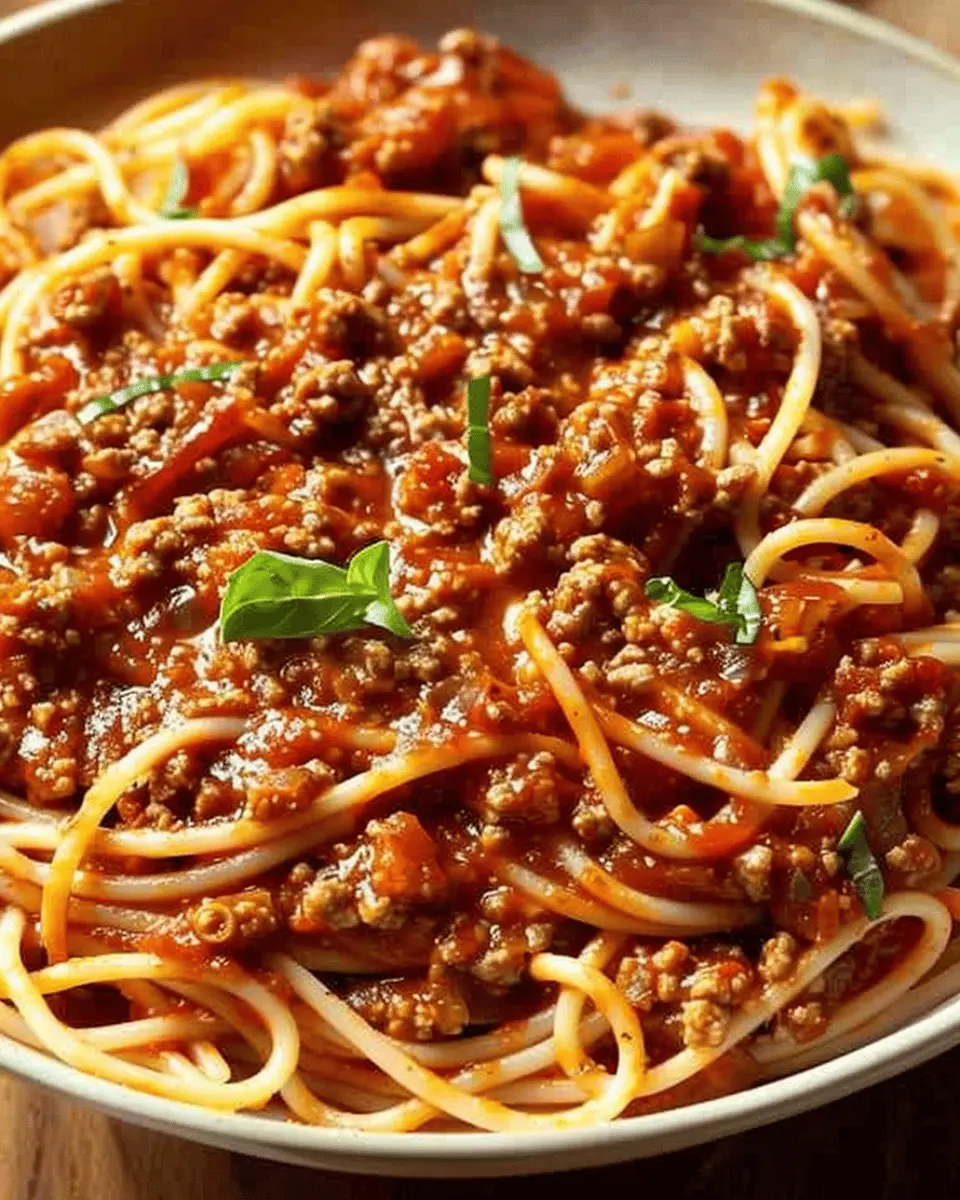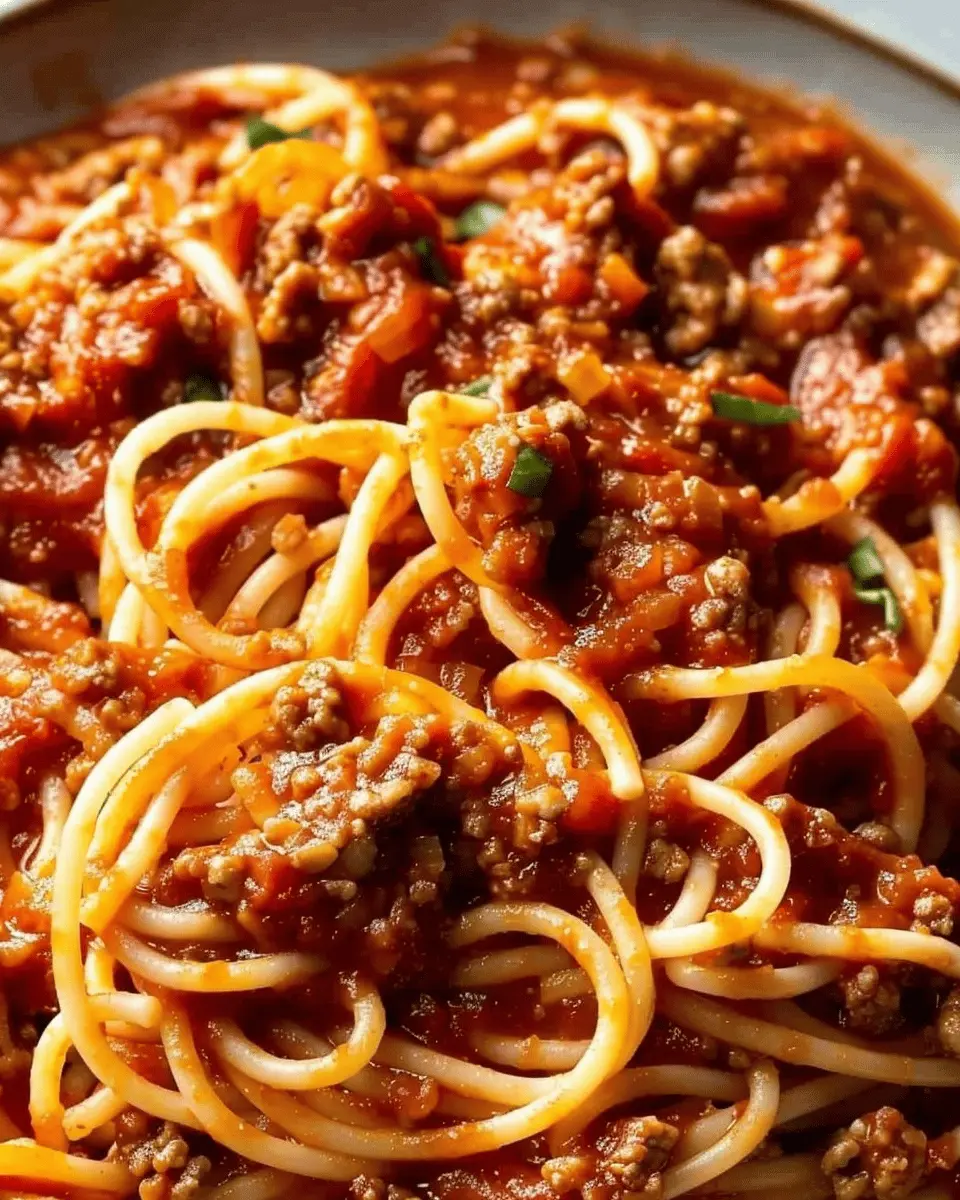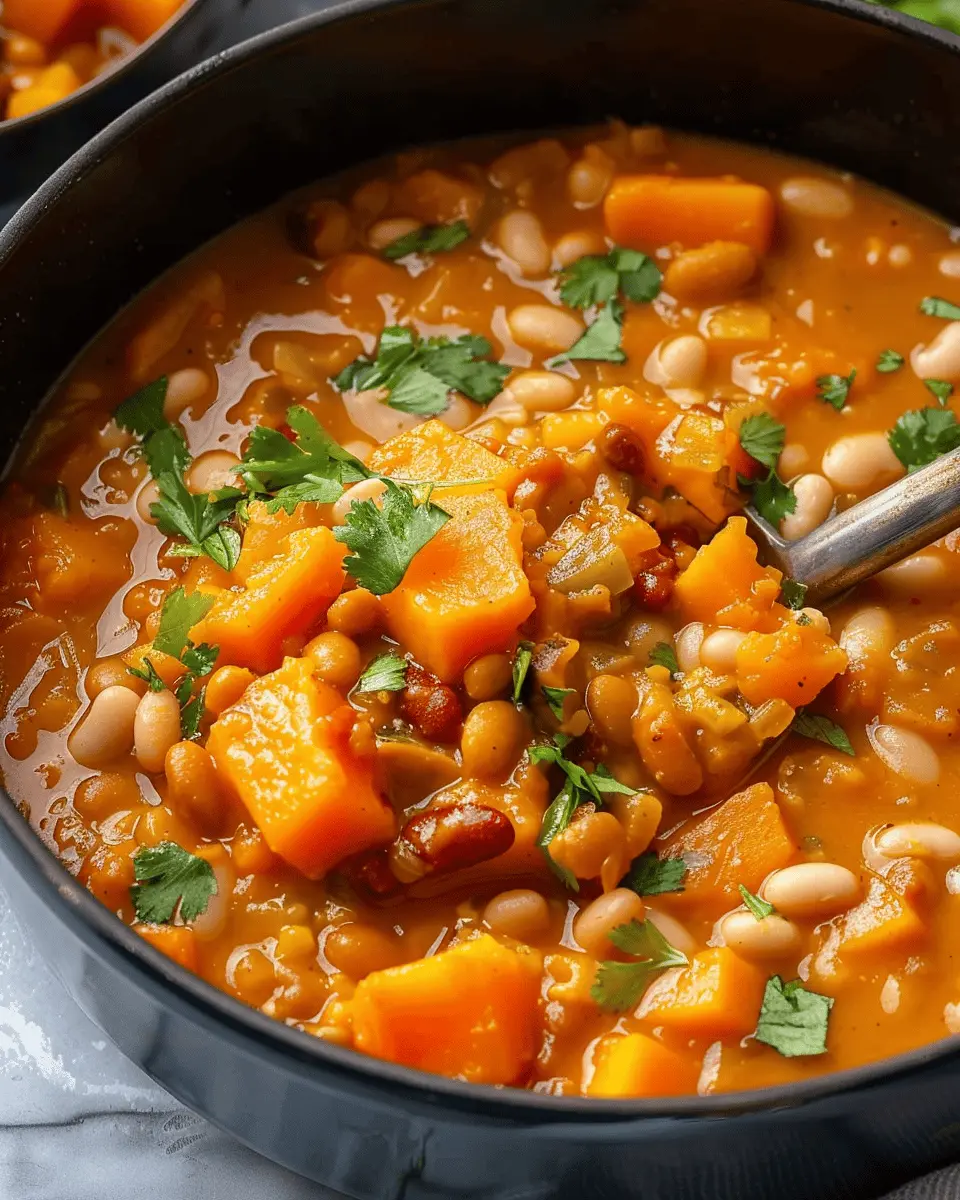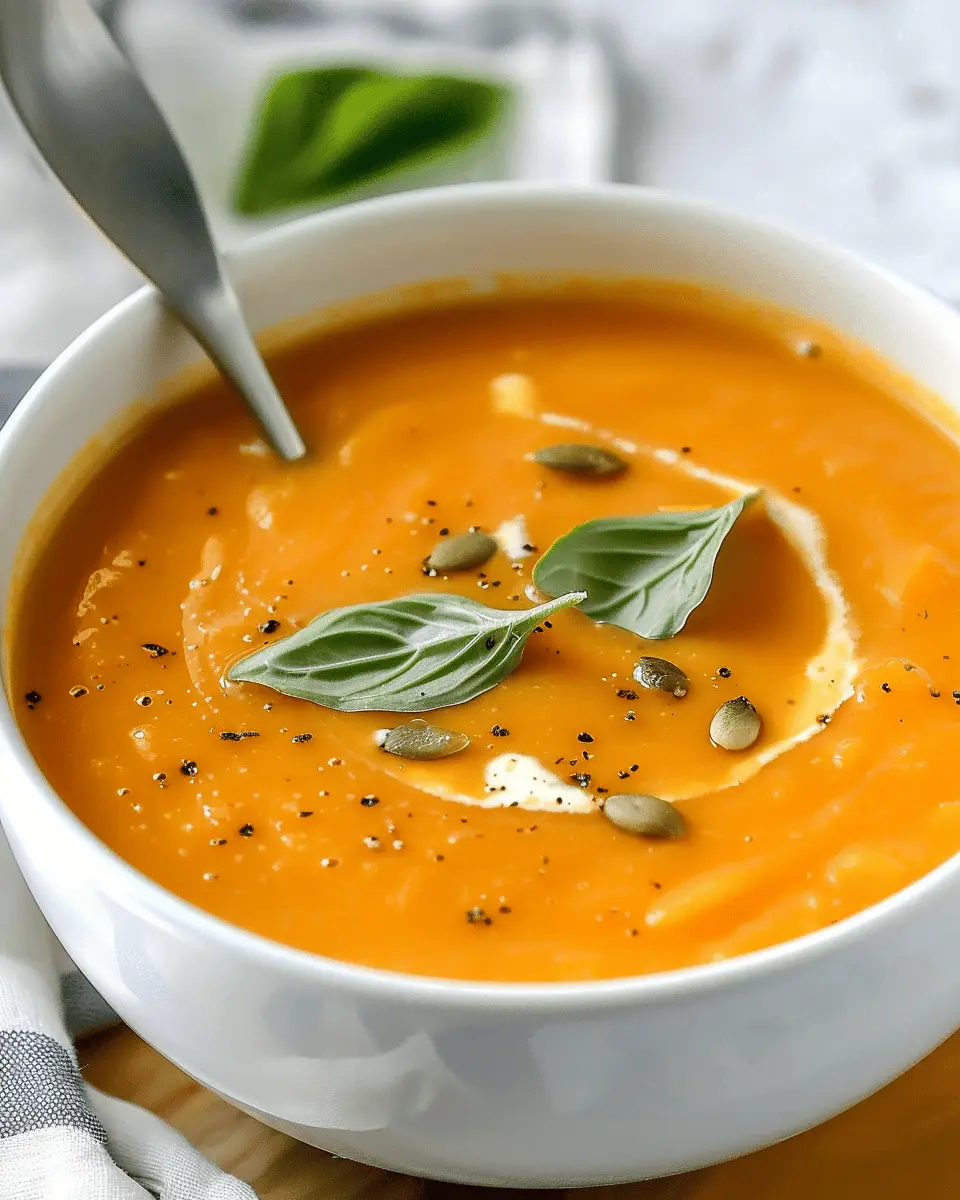Introduction to Homemade Spaghetti Sauce
When it comes to comforting meals, few things can rival a rich, flavorful bowl of spaghetti. What sets homemade spaghetti sauce apart from its jarred counterparts? Simply put, it’s a game changer! With just a handful of ingredients you probably already have in your pantry, you can create a sauce that’s bursting with freshness and taste. Imagine the aroma of tomatoes simmering with garlic, onions, and fresh herbs wafting through your kitchen—now that’s a kitchen experience worth having!
Why is Homemade Spaghetti Sauce a Game Changer?
-
Fresh Ingredients: The beauty of making your homemade spaghetti sauce is knowing exactly what goes into it. Fresh tomatoes, aromatic herbs like basil and oregano, and a touch of olive oil create a vibrant flavor profile that store-bought sauces simply can’t match. This is your chance to showcase the quality ingredients you choose.
-
Customizable Flavor: One of the best things about making sauce at home is the control it gives you over the flavors. You can tweak the balance of herbs, add in that pinch of red pepper flakes for a kick, or even throw in some vegetables for extra nutrients. According to a study from the Harvard T.H. Chan School of Public Health, fresh ingredients can significantly enhance your overall diet.
-
Health Benefits: Homemade sauces often mean fewer preservatives and added sugars than their commercial versions. By using natural ingredients, you’re providing your body with wholesome nutrition, aligning with health-conscious eating habits that many young professionals are embracing today.
-
Cost-Effective: Preparing a big batch of homemade spaghetti sauce can actually save you money in the long run, especially if you’re cooking for a crowd or meal-prepping for the week. A few tomatoes, some spices, and a couple of herbs can feed a family at a fraction of the cost of pre-packaged sauces.
So, why not roll up your sleeves and give homemade spaghetti sauce a try? With its myriad benefits and mouthwatering flavors, it could very well become a staple in your cooking repertoire. Stay tuned for the full recipe, where I’ll guide you step-by-step to create your own perfect sauce!

Ingredients for Homemade Spaghetti Sauce
Essential components for flavorful sauce
Creating delectable homemade spaghetti sauce begins with selecting the right ingredients. Let’s explore what you’ll need for a rich, comforting sauce that will make your pasta nights unforgettable!
-
Tomatoes: Fresh or canned, tomatoes are the base of your sauce. If using canned, opt for whole peeled tomatoes for intensity.
-
Onion: A finely chopped onion brings essential sweetness to balance the acidity of tomatoes.
-
Garlic: Minced garlic adds depth and a beautiful aromatic note—don’t hold back!
-
Olive oil: Use high-quality extra virgin olive oil for sautéing; it enhances the sauce’s overall flavor.
-
Turkey bacon or chicken ham: For a unique twist, adding turkey bacon or chicken ham offers a delicious savory element.
-
Herbs and spices: Fresh basil, oregano, and a pinch of red pepper flakes can elevate the sauce, providing that Italian flair.
-
Broth: Replace wine with vegetable or chicken broth for added richness while keeping it family-friendly.
By focusing on these essential ingredients, you’re well on your way to crafting a delicious homemade spaghetti sauce. For more tips on how to choose ripe tomatoes, check out this guide. Happy cooking!
Preparing Homemade Spaghetti Sauce
Making homemade spaghetti sauce is not just a meal prep task; it’s an experience that fills your kitchen with rich, savory aromas and adds a personal touch to your pasta dishes. Let’s walk through the steps together so you can create a sauce that rivals any Italian restaurant.
Gather and Prep Your Ingredients
Before you dive into cooking, having everything ready makes the process smoother and more enjoyable. Start by gathering the following ingredients:
- 1 pound ground beef (or turkey bacon for a lighter option)
- 1 can (28 ounces) crushed tomatoes
- 2 tablespoons tomato paste
- 1 medium onion, finely chopped
- 4 cloves garlic, minced
- 1 bell pepper, diced (red or yellow for sweetness)
- 1 teaspoon sugar (to balance acidity)
- 1 teaspoon dried oregano
- 1 teaspoon dried basil
- Salt and pepper to taste
- Olive oil for sautéing
As you gather these ingredients, consider chopping your onions and mincing garlic ahead of time. This makes everything feel organized and less rushed when you’re cooking. You’d be surprised how these small steps can transform your cooking experience!
Sauté the Aromatics and Ground Beef
Once you have everything prepped, it’s time to heat things up. In a large saucepan or skillet, pour a couple of tablespoons of olive oil and place it over medium heat. When the oil is hot (you’ll see it shimmer), add your ground beef or turkey bacon.
Cook until browned, which usually takes about 5-7 minutes. As the meat cooks, break it up with a wooden spoon to ensure even browning. If you’re a fan of spice, this is your moment! Toss in your chopped onions and minced garlic. Sauté them together until the onions turn translucent, about 3-4 minutes. The melding of these flavors lays a fantastic foundation for your homemade spaghetti sauce.
Need a tip? Consider using grass-fed beef — it’s not only healthier but also enhances flavor. If you’re interested, check out Healthline for more information.
Incorporate Tomato Paste and Liquids
Now we get to add the stars of the show! Stir in the tomato paste and let it cook for about a minute, which deepens the flavor significantly. Next, pour in the crushed tomatoes. The tomato paste adds a wonderful depth, while the crushed tomatoes contribute a lovely chunky texture.
Are you feeling crafty? You can add a splash of vegetable broth or chicken broth here for additional flavor. Stir everything together, ensuring the tomato paste blends well with the meat and vegetables.
Add Herbs and Seasonings
Next up, enhance your homemade spaghetti sauce with herbs! It’s all about finding that perfect balance. Sprinkle in your dried oregano, dried basil, and a teaspoon of sugar to counter the acidity. Don’t forget to season with salt and pepper to taste; this is where you can adjust the flavors to your palate.
Allow the sauce to simmer together for a minute or two, letting those herbs release their full aroma. If you want some extra kick, you could sneak a pinch of red pepper flakes into the mix!
Simmer to Perfection
Now comes the magic moment. Reduce the heat to low and allow your sauce to simmer for at least 20-30 minutes. This step is crucial — it marries all the flavors, making each bite memorable. Feel free to stir occasionally, which not only prevents sticking but also gives you time to taste and adjust seasonings.
If you find that the sauce is too thick for your liking, simply add a splash of water or broth until you reach the desired consistency. It’s all about creating the sauce of your dreams!
By the end of this process, you will have a rich, homemade spaghetti sauce that not only tantalizes the taste buds but also warms the heart. Remember, every pot of sauce is an opportunity to make it your own — feel free to experiment with different herbs or veggies. Enjoy your delicious creation served over your favorite pasta!

Variations on Homemade Spaghetti Sauce
Spaghetti sauce isn’t just one thing—it’s a canvas for a variety of flavors and ingredients! Here are some delightful variations you can explore to give your homemade spaghetti sauce a unique twist.
Savor the Richness of Vegetarian Spaghetti Sauce
If you’re looking to amp up the nutrition and flavor without the meat, a vegetarian homemade spaghetti sauce is a fantastic option. Begin with sautéed onions, garlic, and bell peppers. Add a mix of:
- Mushrooms for an earthy depth
- Zucchini and carrots for sweetness
- Canned tomatoes or tomato puree for that classic base
Feel free to experiment with herbs! Oregano and basil pair perfectly, while a pinch of red pepper flakes can add a warm kick. Check out more about the benefits of veggies in your cooking here.
Spice Things Up with Spicy Arrabbiata Sauce
If you crave heat, the arrabbiata sauce is your go-to! It starts similarly to your homemade spaghetti sauce, but with a generous dose of crushed red pepper. Consider these steps:
- Sauté garlic in olive oil until fragrant.
- Add crushed tomatoes and the red pepper, allowing simmering for about 15 minutes.
Don’t be shy about garnishing with freshly chopped parsley for a color contrast and a burst of freshness.
Delight in a Creamy Alfredo Variation
Feeling indulgent? Try transforming your homemade spaghetti sauce into a luscious Alfredo. Combine a rich mixture of:
- Heavy cream
- Butter
- Grated Parmesan cheese
Simmer gently, stirring often, until it thickens. Mix in cooked pasta, and top with parsley and cracked pepper. For more creamy sauce ideas, check out this Alfredo sauce guide.
These variations show just how adaptable homemade spaghetti sauce can be, ensuring you never get bored with this classic dish. The next time you’re in the kitchen, consider these options and let your creativity flow!
Cooking Tips and Notes for Homemade Spaghetti Sauce
Best Practices for a Richer Flavor
To elevate your homemade spaghetti sauce, start by sautéing your aromatics, like onions and garlic, in a drizzle of olive oil. This simple step releases their natural sugars and enriches the overall flavor. Adding fresh herbs, like basil and oregano, during the last few minutes of cooking can also enhance the taste. Don’t forget to season generously with salt and pepper, as they amplify every ingredient’s natural flavors.
Another fantastic trick? Incorporate a splash of vegetable broth or broth alternative instead of wine, bringing in depth without overwhelming the sauce. For more flavor tips, consider checking out Food Network’s expert advice on herb combinations.
The Secret to the Perfect Simmer
The true magic happens during the simmering process. Allow your sauce to simmer gently for at least 30 minutes—or up to two hours if you have the time. This helps the flavors meld beautifully. Stir occasionally, and if it thickens too much, add a bit of water or broth to keep it saucy. Remember, patience is key!

Serving suggestions for Homemade Spaghetti Sauce
When it comes to enjoying your homemade spaghetti sauce, the right accompaniments can elevate your meal from good to unforgettable. Here are some delicious ideas to try.
Ideal pasta pairings
While traditional spaghetti is, of course, a classic choice, consider branching out with these options:
- Fettuccine: The wide noodles hold the sauce better, giving you a rich bite every time.
- Penne: Its tubular shape traps sauce, ensuring each bite is packed with flavor.
- Zucchini Noodles: For a lighter alternative, spiralized zucchini offers a fresh, low-carb option that complements the sauce beautifully.
Creative side dishes
To round out your meal, pair your pasta with perfect side dishes:
- Garlic Bread: Who can resist warm, buttery garlic bread? Not only does it taste great, but it’s perfect for mopping up any leftover sauce.
- Caesar Salad: Crisp romaine and tangy dressing balance the richness of the sauce. Add grilled chicken for protein!
- Roasted Vegetables: Seasonal veggies like bell peppers and zucchini add color and nutrition to your plate.
For further inspiration, explore blogs that focus on pairing food and wine alternatives or discover how different cultures incorporate salads and sides into their meals. Your homemade spaghetti sauce deserves a delicious spotlight!
Time breakdown for Homemade Spaghetti Sauce
Preparation time
Making your own homemade spaghetti sauce begins with about 15 minutes of prep work. This includes chopping up fresh vegetables like onions, garlic, and bell peppers. Don’t worry if you’re not a master chef; the beauty of this sauce is in its simplicity!
Cooking time
Once you’ve got everything prepped, it takes about 45 minutes to an hour to simmer your sauce. This allows the flavors to meld together beautifully. If you have Itch to tackle more tasks, you can multitask while the sauce simmers!
Total time
In total, you’re looking at around 60 to 75 minutes to whip up this delicious homemade spaghetti sauce. For an extra kick and texture, consider adding some fresh basil or oregano during the last 10 minutes of cooking. For more tips on flavor enhancement, check out this guide on herbs and spices. Don’t forget to serve it over your favorite pasta!
Nutritional facts for Homemade Spaghetti Sauce
When you whip up a batch of your own homemade spaghetti sauce, it’s not just about the flavor—it’s also about nutrition. Here’s a quick look at the nutritional profile to help you feel great about your meal choices.
Calories per serving
A typical serving of homemade spaghetti sauce contains approximately 80-100 calories. This means you can enjoy a hearty feast without overloading your daily caloric intake.
Protein content
You’ll get around 3-4 grams of protein per serving, especially if you’re adding ground turkey or chicken. It’s a tasty way to boost your protein intake amid your pasta!
Sodium levels
One crucial aspect to consider is sodium. A typical serving can contain about 200-300 milligrams. This varies depending on your use of canned tomatoes or seasoning, so feel free to experiment with fresh herbs to keep it wholesome.
If you want to dive deeper into nutritional benefits, check out resources from the USDA and NutritionData for comprehensive insights!
FAQs about Homemade Spaghetti Sauce
Can I make the sauce ahead of time?
Absolutely! Making your homemade spaghetti sauce in advance not only saves you time but also allows the flavors to develop beautifully. You can prepare the sauce and store it in the refrigerator for up to five days, or even better, freeze it for up to three months. Just make sure to use airtight containers or heavy-duty freezer bags to keep it fresh!
What is the best way to store leftover sauce?
When it comes to storing leftover homemade spaghetti sauce, think smart! After your sauce has cooled, transfer it into an airtight container. If you plan to save it for more than a week, portions in freezer bags work wonders since they save space, and you can defrost just what you need. For tips on safe food storage practices, check out resources like the USDA’s Food Safety site.
How can I adjust the sauce thickness?
If your homemade spaghetti sauce turns out too thick or too thin, don’t worry—this can be easily adjusted! To thicken it, let it simmer uncovered to evaporate excess liquid, or stir in a bit of corn starch mixed with water. Conversely, if it’s too thin, a spoonful of tomato paste or some minced veggies can do the trick. It’s all about finding that perfect consistency that suits your taste. What’s your favorite sauce thickness—thick and hearty or light and fresh?
Feel free to experiment, and remember, the best sauce is one that reflects your personal taste!
Conclusion on Homemade Spaghetti Sauce
Creating your own homemade spaghetti sauce is not just a culinary task; it’s a delightful journey that turns simple ingredients into a satisfying meal. The joy of blending fresh vegetables, herbs, and spices in your kitchen creates flavors that store-bought options simply can’t match. Plus, you control the ingredients, ensuring a healthier option tailored to your taste.
As you explore this recipe, remember that cooking can be a therapeutic escape from your busy life. Whether you make it for a gathering or a cozy night in, your homemade sauce will surely impress. Dive into the world of culinary creativity, and savor every bite! Consider checking out Food Network’s pasta recipes for more inspiration.
PrintHomemade Spaghetti Sauce: Easy Recipe for Flavorful Family Dinners
A delicious homemade spaghetti sauce recipe that’s perfect for family dinners, full of flavor and easy to make.
- Prep Time: 10 minutes
- Cook Time: 30 minutes
- Total Time: 40 minutes
- Yield: 4 servings 1x
- Category: Sauces
- Method: Simmering
- Cuisine: Italian
Ingredients
- 2 tablespoons olive oil
- 1 medium onion, chopped
- 3 cloves garlic, minced
- 1 can (28 ounces) crushed tomatoes
- 2 tablespoons tomato paste
- 1 teaspoon dried basil
- 1 teaspoon dried oregano
- 1 teaspoon sugar
- salt and pepper to taste
Instructions
- Heat the olive oil in a saucepan over medium heat.
- Add the chopped onion and sauté until translucent.
- Stir in the garlic and cook for another minute.
- Add the crushed tomatoes and tomato paste, and stir well.
- Season with dried basil, oregano, sugar, salt, and pepper.
- Bring the sauce to a simmer, then reduce the heat to low.
- Let the sauce simmer for at least 30 minutes, stirring occasionally.
- Serve over your favorite pasta.
Notes
- For a richer flavor, let the sauce simmer longer.
- Adjust the herbs to your taste preferences.
Nutrition
- Serving Size: 1 cup
- Calories: 150
- Sugar: 6 grams
- Sodium: 300 mg
- Fat: 7 grams
- Saturated Fat: 1 gram
- Unsaturated Fat: 5 grams
- Trans Fat: 0 grams
- Carbohydrates: 20 grams
- Fiber: 4 grams
- Protein: 3 grams
- Cholesterol: 0 mg
Keywords: Homemade Spaghetti Sauce














